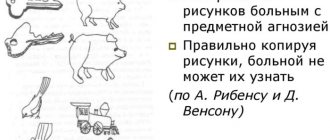In psychology, for a long time, insufficient attention was not paid to the study of the nature of emotional states, their types, properties and mechanisms of manifestation. The study of this neurophysiological phenomenon began in the 50-60s of the 20th century.
The first who paid due attention to the study of emotional states of the individual was the Soviet scientist N.D. Levitov, who attributed them to the manifestation of general mental states of a person. This gave impetus to the further development of psychological research devoted to the emotional sphere.
Definition
An emotional state in psychology is a separate psychophysiological process that has a direct impact on human behavior, motivation to perform certain actions, regulates the speed of thinking and perception of environmental objects.
The formation of a certain emotional state is closely related to the situation in which a person is, as well as the events occurring in his life.
In the scientific world, there are a huge number of views on the nature of the occurrence of emotional states. Currently, there is no single generally accepted definition that characterizes this state of the human psyche.
Psychologists who have studied the psycho-emotional component of personality express their own theories of the origin of emotional states.
The theory of psychologist A.N. Leontyev
Psychologist A.N. Leontyev connects the emergence of a person’s emotional states with what living conditions and other factors influence the individual in the process of performing certain actions.
During the manifestation of basic emotions in the form of fear, timidity, feelings of joy, dissatisfaction, emotional processes develop, which ultimately take the form of a certain state.
At this stage, a change in motor activity occurs, the functional activity of the endocrine glands, which are responsible for the synthesis of additional amounts of hormonal substances, increases.
According to the theory of psychologist A. N. Leontyev, during the formation of an emotional state, a person loses the direct instinctive nature of his emotions, as they differentiate, acquire diverse types and a complex character.
According to this scientist, higher emotional states, influenced by social, aesthetic and intellectual aspects, predominate in people's lives.
A. N. Leontiev’s definition states that the nature of the origin of the emotional state and the process of its formation is dual in nature, including a physiological and mental component.
The theory of psychologist P.V. Simonova
Psychologist P.V. Simonov developed his own theory of the informational nature of emotions and states that are associated with their manifestation. The opinion of this scientist is based on the fact that a person’s emotional state is formed on the basis of emotions, which are actually a reflection of his individual needs, as well as the potential for their satisfaction.
Moreover, in each specific case, the centers of the brain assess the current situation, using information about individual and genetic experience.
Theory K.E. Izard
American psychologist K.E. Izard does not share emotions and mental states that are formed on the basis of their manifestation. This scientist believes that emotional processes and states are closely related to human consciousness, as well as the experiences that arise in a given situation.
Determining the nature of the origin of emotional states K.E. Izard shifts the emphasis to the motivating aspect of the human personality, the process of which involves the perception of what is happening in the environment, thinking, and the performance of specific actions.
Analysis of types of mental processes
Studying the role of various analyzers in the process of cognition, B.G. Ananyev discovered that “such a combination is also present in the auditory system, which, however, functions at the last level (aerception) in specialized forms of speech and musical representations and does not have the ability to transform the signal.” However, the auditory system has been studied much less than the visual system.
The role of other analyzers in the processes of mental reflection has not yet been sufficiently studied; the statement about the intermodality of higher (per sensations) cognitive processes does not deny the need to study the role and specificity of the representation of each modality at different levels of cognition.
This position set us the task of supplementing the picture of the specifics of mental processes in terms of their modality, obtained as a result of an analysis of the literature. Considering that memory stores not only the results of perception of the surrounding reality, but also the results of sensations, we classified kinesthetic, tactile, pain, temperature, static-kinetic, organic and vibration memory as types of memory. Since representation and imagination are processes in which holistic images are recreated and processed, the types identified in them, in our opinion, should be similar to the types of perception, therefore they included visual, auditory, tactile, olfactory, gustatory and kinesthetic representations and imagination. To the specificity of thinking was added the auditory type of thinking, which was studied mainly in the form of musical thinking. Analysis of the types of mental processes according to the criterion “object of reflection” showed that this criterion “overlaps” for almost all levels of cognition. Therefore, we limited ourselves to the following transformations: Representation and imagination were divided into actual, motor and emotional imagination in accordance with the characteristics of the images present; conceptual imagination was excluded from the types of imagination, since it is only a postulated but completely unexplored characteristic of imagination; the object of reflection for perception and sensation was determined in accordance with the characteristics of objects and phenomena of the external, material world and the characteristics of man as a bearer of the subjective.
A special place is occupied by the criterion “form of existence of matter”, which is proposed for the classification of perception and is practically not used for the classification of other types of mental processes, although it is known that the main material that provides information about the properties of reality are the results of sensations and perceptions, which in turn serve source of functioning of the processes of memory, thinking, imagination. From this we can draw a completely natural conclusion that almost all individual modes of perception can have corresponding analogues for other cognitive processes. At the same time, the close and inextricable connection of all mental processes and the unity of the psyche as a system generate feedback between different levels of cognition.
As B.G. correctly noted. Ananyev, a person’s orientation in space and the structure of spatial perception express general features of mental development. It is no coincidence that recently many authors have been paying great attention to the study of the properties of spatial representation, imagination and thinking, the main material of which is spatial images directly related to a special type of perception - the perception of space. However, spatial memory, without which the functioning of both spatial imagination and spatial thinking is impossible, has not yet been practically studied.
The other side of cognitive processes associated with such a category as “time,” which has so far also been studied mainly at the level of perception, has been developed even less.
Classification
An emotional state (in psychology this is reflected by the close connection between emotions, feelings and further actions of the person who experiences them) is a mental disturbance that arises under the influence of external and internal factors that are not constant.
After a change in the fundamental circumstances, this state of a person changes, which entails a change in the motivation for further actions. The table below describes the classification types of human emotional states.
| View | Characteristics of the psychophysiological process |
| Mood | Mood is a special type of emotional state that affects the thought process, the motivational part of behavior and actions manifested in a given situation. The occurrence of this psycho-emotional state is closely related to events in a person’s life, his health, the time of year, and his social circle. Most psychologists believe that mood is one of the weakest emotional states, which easily changes under the influence of environmental factors. This type of psycho-emotional state can be saturated with positive or negative emotions, feelings, the presence of which is an integral component of mood. |
| Affect | Affect is one of the most dynamically developing emotional states, which arises as a simultaneous explosion of emotions. This type of psycho-emotional state occurs suddenly, develops dynamically, but also changes very quickly. The main characteristic feature of affect is that in such a situation, a person’s consciousness loses control over actions and the decision-making process. This type of emotional state can be positive, or it can have negative consequences for the person under its influence. Affect becomes the cause of memory lapses, lack of recollection of a number of ongoing events. |
| Frustration | Frustration is a complex emotional state of a person that arises due to strong psychological and physical stress. The main irritant factor is one or another obstacle, due to the impact of which a person cannot achieve his goals and objectives. A growing emotional impulse in the form of dissatisfaction and strong indignation exceeds the limits of patience. The psycho-emotional state of frustration is characterized by the presence of pronounced irritation, anger, and disappointment in current events. Changing this emotional state is possible only if a person is able to overcome a conditional obstacle, finds other ways to achieve his goals, or redirects his attention to other environmental objects. |
| Passion | Passion is a strong, long-lasting and stable emotional state of a person, which causes maximum concentration of the thought process, and also redirects all the energy reserves of the body to achieve set goals. This type of psycho-emotional state can be short-term in nature, or accompany a person throughout his life. For example, a short burst of passion, which is realized during a declaration of love feelings for a loved one. The lasting type of this emotional state is characteristic of people who are obsessed with manic ideas, have addictions, and various types of mania. |
| Stress | Stress is a special emotional state of a person, which is a protective reaction of the body to the influence of aggressive environmental factors. There are several subtypes of this psycho-emotional state, in which every adult has found himself at least once. In the first case, stress may occur when ongoing events and emerging factors have a positive impact on the further development of the individual, facilitating its adaptation to radically new conditions and standards of life. Distress acts in exactly the opposite way, preventing further human activity, negatively affecting the functions of the nervous system, and provoking the development of serious diseases. Prolonged stay in this emotional state can lead to chronic feelings of anxiety, disturbances in the process of sleep and falling asleep, and the occurrence of long-term depression. |
Emotional state in psychology
Emotional state (in psychology this term is synonymous with the definitions “emotional process, phenomenon”) is a special way of manifesting feelings, which depends on the confluence of many factors. Therefore, it is possible that a person’s positive mood can change dramatically under the influence of a stressful situation, be accompanied by passion, or move to the stage of affect.
Characteristics and properties
Each type of psycho-emotional state has basic properties that are directly related to what feelings a person experiences in a given situation, namely:
- emotional coloring, which gives uniqueness to the experience of good or bad life events, determines the further formation of mood, motivates to perform specific actions;
- the intensity of the emotions shown, as well as their quantitative indicator, occurring within a short period of time;
- duration, which is characterized by the presence of a long or short psycho-emotional state of a certain type.
In their manifestation, the properties of a person’s emotional states can be more or less pronounced, which depends on the specific conditions and influence of environmental factors in which the person is located.
2.Fill out the table:
| Emotional condition | Main characteristics | ||
| intensity | Duration of flow | Situational nature | |
| Affect | |||
| Passion | |||
| Mood | |||
| Stress | |||
| Frustration | |||
| Feelings | |||
16
Appendix No. 3
Functions and role
The emotional state (in psychology, this definition implies the obligatory presence of feelings and emotional excitement) is an integral component of the life process, which performs a whole range of necessary functions.
Adaptive function
The adaptive function of the emotional state is manifested in providing the individual with the opportunity to adapt to new circumstances and environmental conditions.
At the same time, protective mechanisms are launched in the body, allowing a person to survive this period of life, maintaining physical and mental health. For example, to arrange your life as quickly as possible after moving to a new place of residence, or to begin professional or educational activities.
Communication function
The implementation of the communicative function occurs through a person’s communication with the people around him. Using the gift of speech, an individual has the opportunity to express his emotional state by talking about the presence of positive or negative feelings.
A distinctive feature of the communicative function is that it is two-way. In the course of his life, a person constantly encounters situations where the quality of his psycho-emotional state is affected by communication with other people.
Reflective function
The reflective function of the emotional state is characterized by the fact that, due to the totality of emotional experiences and the amount of surrounding information, a person receives a generalized assessment of certain events, people, as well as their current activities.
Incentive function
The incentive function of the psycho-emotional state determines the direction and motivation of the actions of one person or group of people that can lead to the achievement of a common goal. Without this function, it is impossible to overcome obstacles and further progress in personal development.
Preferred
The implementation of a preferred function occurs in situations where a person has a conflict of several motives for performing certain actions, among which it is necessary to choose the most profitable option.
Regulatory
The regulatory function of the emotional state ensures control and lability of the emerging relationships between the individual and the people around him.
The process of implementing this mechanism is influenced by the level of public culture, moral norms and mores characteristic of a particular society or area of residence of a person.
Psychohygiene of a medical worker
Human behavior is multimotivated, he is the subject of many activities at once, therefore his emotional life is characterized by dynamism and complexity. Different emotions and feelings can create internal and external conflicts.
Suppressing or restraining external manifestations of emotions is not an effective way to control one’s emotional life, since it negatively affects health and deprives a person of the strength for active external activities.
Spilling out emotions (negative) on others negatively affects the health of others and disrupts social contacts. More effective ways to control emotions are the following:
- switching to other activities (“canalization” of emotions, sublimation),
- rationalization (an attempt to understand and explain the current situation),
- psychogenic training (since feelings can be attached to objects, this connection is broken during therapy),
- the normal course of the process of experiencing (a person must survive the events, circumstances and changes in his life that gave rise to the crisis; this is a special type of internal activity, internal work), the elimination of emotions.
To work successfully, a medical worker must be a differentiated personality; it is useful to engage in personal growth and undergo psychotherapy in a professional support group. A medical worker must learn to take care of himself, be in good psychological shape, and take responsibility for his emotional state.
Forms of manifestations
An emotional state (in psychology, this concept means the presence of certain experiences that arise under the influence of positive and negative factors) is a rush of feelings that can change depending on certain life circumstances. There are 9 main forms of manifestation of emotional states.
Interest
Interest, as one of the forms of manifestation of a person’s emotional state, is a mechanism for realizing a cognitive need, which ensures the full development of the individual. In this case, the neurons of the brain are excited.
The manifestation of an emotional state in the form of interest is due to the obligatory presence of a new object that evokes a desire to study it. A similar psycho-emotional reaction occurs after a sharp change in environmental conditions. For example, moving to a new place of residence, traveling.
Astonishment
The manifestation of an emotional state in the form of surprise can occur under the influence of negative or positive experiences. A prerequisite is the presence of a sudden event, the occurrence of which was not expected or anticipated by the person himself or his immediate environment.
Joy
The manifestation of an emotional state in the form of joy is possible only under the influence of positive factors and events. In this case, a person simultaneously feels satisfaction of his needs, self-confidence, and senses his importance. The manifestation of joy is short-term in nature, since prolonged expression of positive emotions is stressful for the nervous system.
Suffering
Suffering is always saturated with a large number of negative experiences. This form of manifestation of the emotional state plays an important role in motivating a person to further actions to change his lifestyle, achieving goals that will ultimately lead to joy, satisfaction, and a feeling of happiness.
Neglect
Disdain is closely related to the expression of a sense of personal advantage.
This form of manifestation of an emotional state becomes the basis for the expression of other negative emotions, most of which lead to conflicts and destruction of social ties.
Hostility
The manifestation of an emotional state in the form of hostility is possible only if there is a simultaneous combination of feelings of anger, disdain and disgust towards a certain object. In this case, the occurrence of aggression, which is expressed in physical and verbal influence, cannot be ruled out.
Fear
The emotional state, manifested in the form of fear, occurs after the brain receives information about potential danger. This may be a real threat to life or an imaginary situation that is modeled in the mind based on previously experienced emotions. For example, fear of going to the dentist, fear of the dark, or swimming in deep water.
Anxiety
Anxiety is a form of manifestation of an emotional state that has a direct impact on the development of neuroses. In this case, the human nervous system is in a state of constant excitement and stimulation by one or a number of negative factors. This may be an accompanying feeling of shame, resentment, anger, or interest.
Shame
The feeling of shame is formed from a complex of negative emotions that arise under the influence of negative events. This form of manifestation of an emotional state arises on the basis of a discrepancy between the actions, appearance and opinions of the subject in relation to the expectations of the majority of others.
Quite often, a feeling of shame provokes strong mental anxiety, which leads to prolonged suffering and a state of depression.
Factors of psychological states
The leading factor in a person’s psychological state is, first and foremost, the state of his health. The parameters are determined by taking into account the level of stressful environment on daily life activities.
In addition to health, such factors include satisfaction with personal life, interpersonal relationships, financial situation and other points that show the degree of satisfaction with the surrounding reality.
The combination of several negative factors or the long-term negative impact of one of them leads to a deterioration in the psychological state. In cases where such perception of what is happening lasts for a long period or is excessively exciting, it is recommended to contact a specialist.
During individual or group sessions of psychotherapy, psychotraining, psychologists and, if necessary, psychiatrists, form readiness to overcome the level of influence of unfavorable conditions, provide assistance in activating the necessary volitional qualities that allow one to overcome difficult periods and eliminate problems with minimal psychological disturbances of the condition. Formed:
- focus of control;
- adequate high self-esteem;
- psychological activity;
- dominance of positive emotions without agitation.
People with high nervous system strength endure the inevitable difficulties of life more easily than people with a weak will.
Management methods
There are 3 most reliable and proven techniques with which you can effectively control emotional states.
Psycho-emotional regulation
This method of controlling the emotional state involves activating memories of good or bad events that were experienced previously. For example, to suppress feelings of anger, irritation, rage, it is enough to think about a life situation in which there was an excessive amount of positive emotions, a feeling of happiness, joy.
Regulation of mental process
This method of managing emotional states is more complex, as it requires control over the thought process and consciousness.
The implementation of this method is carried out as follows:
- it is necessary to distract your thoughts from the negative events that occur in the environment;
- switch attention to other objects and objects that do not cause negative emotions;
- from each situation you should choose only that emotional component that does not cause stress;
- always adhere to the principle of a positive interpretation of any event;
- to attach insignificant significance to the current situation, as if it does not have any impact on life processes.
It is always recommended to redirect negative emotional impulses into various areas of life and professional activity.
Bodily regulation
This type of control over the emotional state involves performing distracting actions that do not allow you to focus on the feelings and emotional excitement that have arisen.
For example, counting beads located on hand rosaries. In this case, tactile contact of the fingers occurs, which creates a distraction effect. At the same moment, due to constant counting, attention dissipates.
An emotional state is a set of feelings, sensations, and emotional disturbances that are experienced over a long or short period of time. In psychology, scientists P.V. studied the psycho-emotional states of a person. Simonov, K.E. Izard, A.N. Leontyev.
Changes in emotional state occur under the influence of positive or negative environmental factors, and its forms of manifestation are closely related to all types of life processes. A person’s psycho-emotional states are filled with good and bad experiences, situations that influence his personal development and motivation to act.











